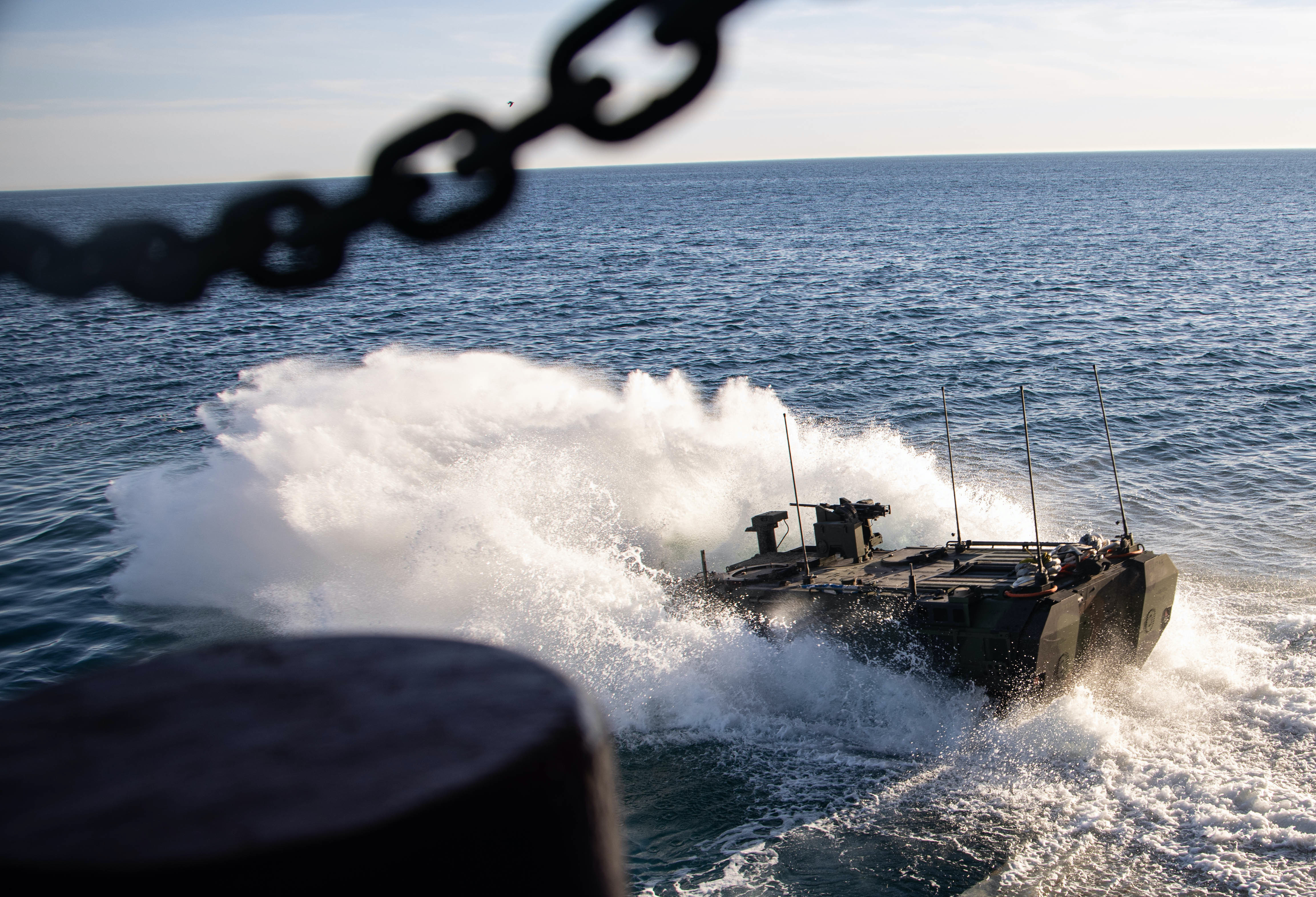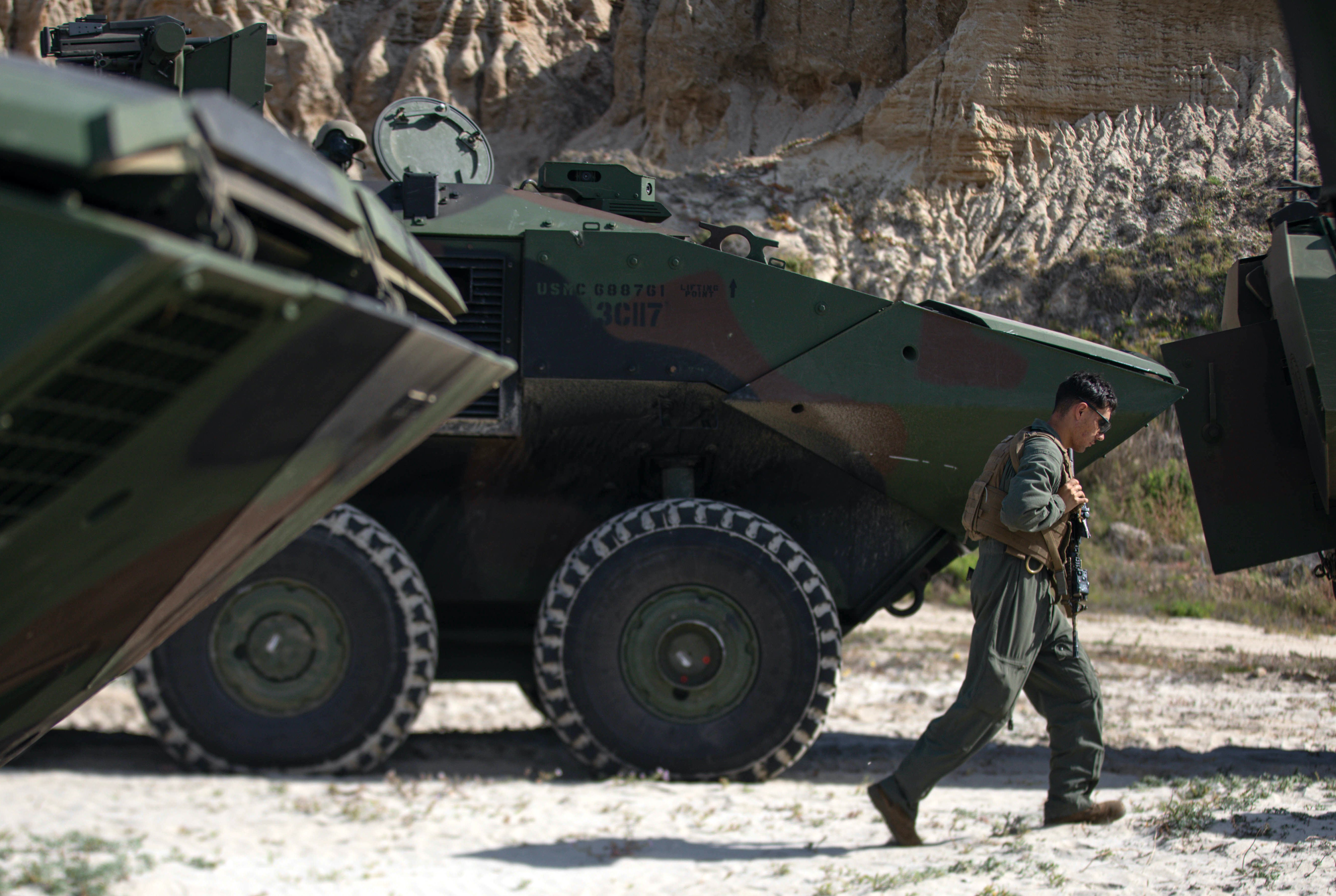
The Marine Corps has delayed the first deployment of its new Amphibious Combat Vehicle as it wraps up an investigation into a July training incident, USNI News has learned.
The Makin Island Amphibious Ready Group and the 13th Marine Expeditionary Unit will no longer deploy with the ACVs later this year, according to two defense officials.
The Marines need more time for ACV certifications and to work out both logistics and maintenance for the new vehicles, USNI News understands. The investigation into the July incident, in which two ACVs were knocked off their wheels in heavy surf, is ongoing and the service wants to wait until its conclusion before deploying the vehicles.
The Marine Corps paused ACV water operations in July after the two ACVs were disabled during the July training event at Camp Pendleton, Calif. No Marines were injured, USNI News reported at the time. The service said the pause would let the Marine Corps investigate the incident and implement safety measures.

The three ships that make up the Makin Island ARG – USS Makin Island (LHD-8), USS John P. Murtha (LPD-26) and USS Anchorage (LPD-23) – are all certified to carry the ACVs and perform well-deck operations. The Makin Island ARG and the 13th MEU embarked were slated to be the first ARG/MEU to deploy with the new ACV. The three amphibious warships wrapped up their ACV certifications during the Amphibious Squadron Marine Expeditionary Unit Integration Training (PMINT) exercise in July.
Built by BAE Systems, the ACV will replace the Marine Corps’ aging Assault Amphibious Vehicle. The 1st Marine Division under I Marine Expeditionary Force has been testing the new ACVs out in California. The Division performed water and well-deck operations in February after an operational pause had kept the ACVs out of the water since August.
In December, the service announced it would permanently end AAV water operations following the tragic 2020 AAV sinking off the coast of California that killed eight Marines and one sailor. The AAV began taking on water while traveling back to USS Somerset (LPD-25) during a training drill off of San Clemente Island. An investigation into the incident found that a “chain of failure” led to sinking.





